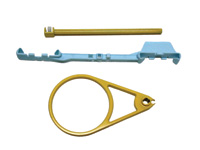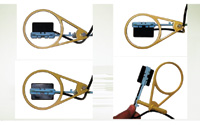Dentists often hear messages encouraging them to integrate digital technology into their practices, and more specifically, that digital radiographs are superior to film. These messages are often misconstrued due to various factors, including the selling techniques of digital sensor companies and dentists’ preconceived notions about digital technology.
Most dentists infer that using digital sensors will cut costs and improve workflow by automating the process of taking x-rays with film. However, digital radiology improves the ease of taking multiple x-rays through an entirely new process that saves you time. Any dentist knows that more time means more money. Unfortunately, dentists are missing the point.
The fact that practically every dental office needs effective digital x-ray imaging is a testament to the need for digital radiography. Despite the potential benefits of digital radiography, many dentists still assume that it is too expensive and problematic. Why is there such aversion to digital radiology, when it has been created as a tool to improve workflow?
Dental professionals have long had a love-hate relationship with digital radiography. One explanation is that when digital systems were first introduced in the late 1980s, available computer systems lacked the processing power and practice management software to maximize this new technology. Furthermore, digital systems were expensive, and the sensors that accompanied digital systems were bulky and uncomfortable compared to x-ray film. Thus, from the beginning dentists have viewed digital radiology with a cautious eye.
With time, integrated software and faster computers made digital radiology more affordable and accessible. Yet dentists continued to expect digital radiography tools to simply automate what they were doing by hand. As this is not the case, they were disappointed by the results. A perfect example of the perpetuation of this idea can be seen in the way that digital sensor companies market to dentists. They try to lure dentists by highlighting how much money will be saved by going digital. They calculate how many x-rays we take each day, film and chemical costs, and processor maintenance and costs. They speak to dentists in their current language and lead them to believe that digital sensors will perform their usual x-ray processes for less money.
However, the time saved by digital radiography is far more valuable than any money you’ll save on film and chemicals. With digital sensors, the time it takes to capture and see an image is cut probably by 85%. Emergency visits are faster, and you can fit more procedures, such as endodontic treatment, into your schedule. Digital sensors involve less radiation, and the resulting images are impressive. Further-more, you can catch and correct angle and exposure mistakes instantly, not after the patient has already left.
CLINICAL EXAMPLE
 |
|
Figure 1. Using digital radiography to take these 6 images saved significant time compared to conventional film radiographs. |
The following example illustrates how digital radiography can save you time. Porcelain broke off of a retrievable implant crown I had delivered a few years ago, so I removed the crown and sent it to the lab for rebaking. I had the patient keep his old implant models. The crown came back with the new porcelain, but would not seat according to the radiograph. Cautiously, I removed a little porcelain from the contacts and reseated the crown, each time taking a new radiograph (Figure 1). Had I used film, processing time would have been 6 images at 5 minutes each, or 30 minutes. Instead, I had instant, accurate results.
Dentists need to realize that digital radiography will increase the efficiency of taking x-rays when evaluating the return on investment of digital sensors. Imagine the effect on your schedule and other patients of running 30 minutes late while waiting for the film to be processed. What is that value?
FEAR OF THE LEARNING CURVE
In addition to receiving mixed messages about the benefits of digital sensors, dentists fear that their assistants won’t be able to use them. This is easily overcome through practice management, training, and using the correct sensor holders. Certainly, it is not a reason to avoid technology. There is a learning curve for taking and reading digital radiographs. The artifacts are different than those of film, but those are quickly learned. Dentists need to embrace, not avoid, new digital processes and reap the benefits for both practice and patient.
I have often heard that dentists don’t want digital sensors because they cannot take vertical bite-wings. However, digital sensors capture quality images of the proximal bone between the teeth, thus eliminating the need for vertical bite-wings. This is a perfect example of the misconstrued idea that digital sensors will automate current x-ray processes.
Dentists are also concerned with the pain and discomfort sensors cause. However, technique and the design of the sensor holder are critical. Most of our digital sensor holders are simply film holders redesigned to hold the sensors. Some holders are so confusing that the staff and doctor get frustrated and revert to film when in a hurry. Some sensor holders don’t permit the use of rings, and many are costly. So, with the great strides previously made in the digital radiography field, the basic problem of patient comfort persists. As I mentioned, the original shift from standard x-rays to digital radiography was done utilizing adaptations of prior x-ray holding systems to the new digital systems. With the familiarity of using these existing holders it was hoped that the transition to digital sensors would go smoothly. Unfortunately, the coupling of rigid holders to flexible x-ray film did not translate well when coupling rigid sensors with rigid holders. They tend to hurt, so using a flexible holder with a rigid sensor helps to ameliorate that discomfort problem. In addition to this fact, the prior systems were designed for multiple film use in a complete radiographic series. Putting aside x-ray films to use with certain holders was an easy thing to do. With digital radiography, most offices had few sensors, and the majority had only one to use with a holding system that required assembly and many parts. The adaptation of existing holder systems to transition to digital radiography was a stop-gap solution at best.
 |
 |
|
Figures 2a and 2b. Modern sensor holder designs significantly reduce the time required to take a full-mouth set of x-rays. |
Only recently, and long overdue, have we seen some sensor holders finally designed from the ground up. I tried one of the first, the ClikRay from ClikTech (877) 251-0594 or clikray.com), and it reduced the time to take a full set of digital radiographs in half. And only one holder is used for the entire mouth. (It can also be used with film and phosphor plates for those offices with “dual” technologies; Figures 2a and 2b).
The design allows the operator to use parallel cone and/or bisecting angle techniques to obtain the required views. The combination of a flexible holder with a rigid sensor has helped us reduce patient discomfort to virtually a non-issue. What is really amazing to me is that this sensor holder was not designed by a holder company, but by a local dentist in my community! Credit to Dr. Harold Schmulenson of Glenview, Ill.
CONCLUSION
Patient comfort, staff (and doctor) acceptance, speed, and ease of use are the keys to achieving acceptance of digital radiography in the dental office. In particular, the time saved compared to conventional film-based radiography makes digital radiography an excellent investment.
Dr. Freydberg, a full-time practitioner, is a 1968 graduate of the University of Illinois College of Dentistry, receiving its “Most Distinguished Alumni Award” in 2004. He is a fellow of the AGD, the International College of Dentists, the American College of Dentists, and the International Academy for Dental-Facial Esthetics. He has lectured and published on the subject of computerization of the clinical and management aspects of the dental practice. He is also a consultant to the ADA Council on Dental Practice. Dr. Freydberg, an active member of the Chicago Dental Society, can be reached at barry@hitech2thdoc.com, or by visiting hitech2thdoc.com.











